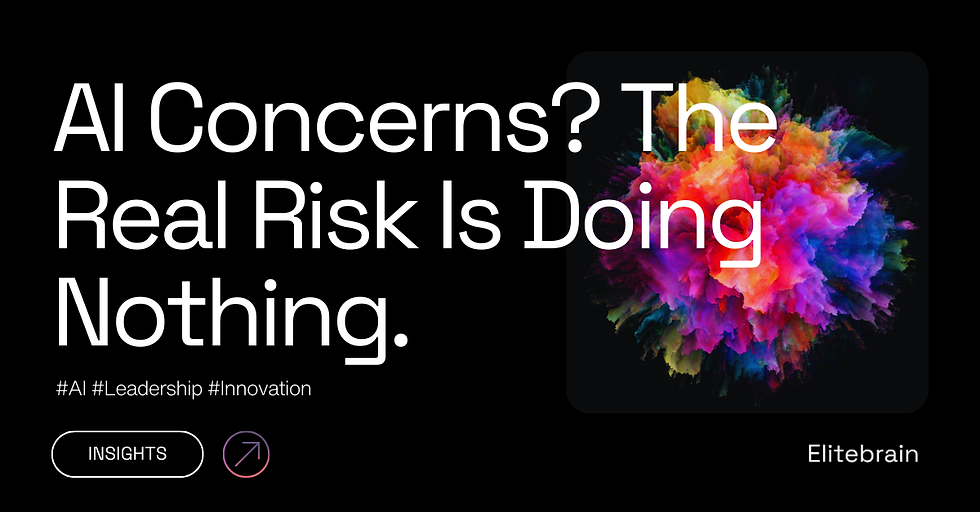The Real AI Race: Integration Over Intelligence
- Delphine Seitiée
- Feb 17
- 3 min read
In the evolving landscape of enterprise AI, intelligence is no longer the battleground. The real race — the one that will reshape how businesses operate — is happening elsewhere. It’s not about building the smartest agent, but the one that can connect.
As David Sacks aptly put it, “The first agent to connect to all of your work apps — so it can access information and complete tasks across all of them — will probably win.”
In a world overwhelmed by software sprawl, fragmented systems, and information overload, the ability to integrate isn’t just useful — it’s transformational.
A Fragmented Reality
Today’s digital workplace is a maze. Employees juggle dozens of tools daily — project management platforms, communication apps, CRMs, ERPs, and cloud drives — all containing critical, yet siloed, information. The result? A constant state of context switching, loss of focus, and an overwhelming amount of knowledge that goes unused. Information is often “hot” for just a few days — after that, it’s buried, rarely accessed again. Strategy documents, client insights, internal reports — all lost in the noise.
The tools meant to increase productivity are now part of the problem. Businesses are running faster, but not necessarily smarter.
Integration Is the New Intelligence
In this context, the next frontier for AI isn’t just to understand language or generate text — it’s to do things. To act across systems, carry out tasks, and move information seamlessly between environments. The true value lies not in an agent’s IQ, but in its ability to function as the connective tissue of the enterprise.
An AI agent that can unify workflows, access data across departments, and maintain context as it moves from tool to tool will do more than optimize processes — it will redefine how work gets done. Legal, HR, procurement, and marketing won’t operate in parallel silos, but as part of one intelligent, orchestrated system. When everything flows together, inefficiencies disappear.
What’s Holding Us Back
Of course, the shift won’t happen overnight. Integrating AI across the enterprise presents real challenges. Data is often messy, scattered, or unstructured — not ready for intelligent systems to act on. Authentication across platforms is inconsistent and complex. Security policies can create walls that limit what agents can access. And even when integration is technically possible, maintaining context across apps remains a difficult task.
But these are solvable problems. Just as the cloud required a rethinking of infrastructure, AI integration requires a rethinking of systems, data flows, and organizational mindset. The companies that lean into these challenges now will be the ones setting the new standard tomorrow.
A Glimpse of What’s Coming
The speed of progress is staggering. In 2019, AI could handle seconds of simple tasks. Today, it can complete hour-long work in minutes. By 2026, we’ll likely see day-long tasks executed in hours. And by 2030, month-long projects could be finished in days.
Imagine a near future where your inbox is no longer a burden but an extension of your thinking — managed end-to-end by an AI agent. Where proposals are automatically tailored from previous client conversations, alerts anticipate operational risks before they appear, and internal documentation evolves on its own as processes change. This isn’t science fiction — it’s a matter of integration.
The New Baseline
Just as cloud computing redefined digital infrastructure, AI agents will redefine organizational intelligence. But only if they are connected. Integration isn’t a technical layer — it’s the core of tomorrow’s enterprise. Those who embrace it won’t just streamline operations; they will leave traditional workflows behind and create entirely new benchmarks for speed, clarity, and execution.
In this race, the smartest agent won’t win. The most connected one will.
Because integration isn’t a detail — it’s the disruption.



